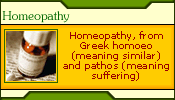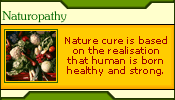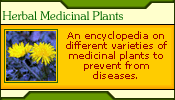|
Unani Medicine is an age-old system that originated in Greece,
from where it later spread to India through Arab and Persian traders.
Hence it is also known as the Greco Arab system of medicine. Indian
physicians enriched this system with their local knowledge of indigenous
herbs, their own observations and experiments to make it one of
the nationally accepted systems of treatment. Though the Unani system
of medicine in India is largely different from that of old Greece,
it is also referred to as 'Unani Tib' to indicate its origin.
Origin of herbalism
To trace the history of herbalism in Unani Medicine we must go
back to the history of Pharmacology, for until the last century
medicinal plants were still being processed for general use. The
discovery of the curative properties in plants must have sprung
from some natural and innate instinct - primitive man used plants
for both food and medicine. He would have learnt after trial and
error and perhaps many an unfortunate experiences, that some plants
contained certain specific properties, and was able to identify
them by the result they induced. Similarly, he would also have observed
which plants and animals are utilized or consumed when they were
sick. After seeing an injured deer rubbing itself against geum he
might have discovered, for instance, that this plant would heal
his own wounds, and realized that dog tooth grass would act as an
emetics as it did with the cat.
The German botanist Molish made an interesting observation concerning
six plants containing Caffeine -namely coffee, cola, mate, tea,
cocoa and guarana. Among innumerable plant species man was able
to pick out these six with great precision even though they lack
particular features which enable them to be easily distinguished
for their medical properties.
The earliest botanical knowledge as applied to the Unani system
of medicine was thus based largely on instinct and natural experimentation.
But in due course as prehistory gave way to antiquity, man began
to make rational deductions from his observations and to use these
deductions creatively in order to improve the quality of life. An
example of this is an ancient Egyptian medicine, as recorded in
the Ebers Papyrus (G.M.Ebers, German Egyptologist and Novelist 1837
- 98) which illustrates the great advances that had been made in
the understanding of suitable drugs and pharmaceutical preparations.
The medicinal value of ricinus communis from which castor oil is
made and of pepper mint and flax (used for linseed oil as well as
linen) were already known. Embalmers, too made use of resins such
as sweet flag or sweet rush (acoris calamus) also used for dyspepsia,
Benzoin and a number of fragrant essences that have still to be
identified. We know, too, from cune tablets that the Babylonians
knew as much about the medicinal uses of plants as the Egyptians.
There is also mention in the bible of how hyssop and cedar were
used by the Hebrews to treat various disorders.
Unani medicine has passed through various ages and stages. At the
beginning of 20th century, Chemistry started its birth in the field
of drugs by the synthesis of Acetyl Salicylic Acid followed by thousands
of chemical compounds, which are now in extensive use. But inspite
of the great achievements and developments of the chemical drugs
which succeeded in combating many diseases, still so many compounds
derived from plants have their own place and are neither deleted
nor omitted till now. Some outstanding examples of such compounds,
which initiated a new era in the treatment of certain diseases,
are Codiene, Morphene, Reserpine and Digitalis.
|















